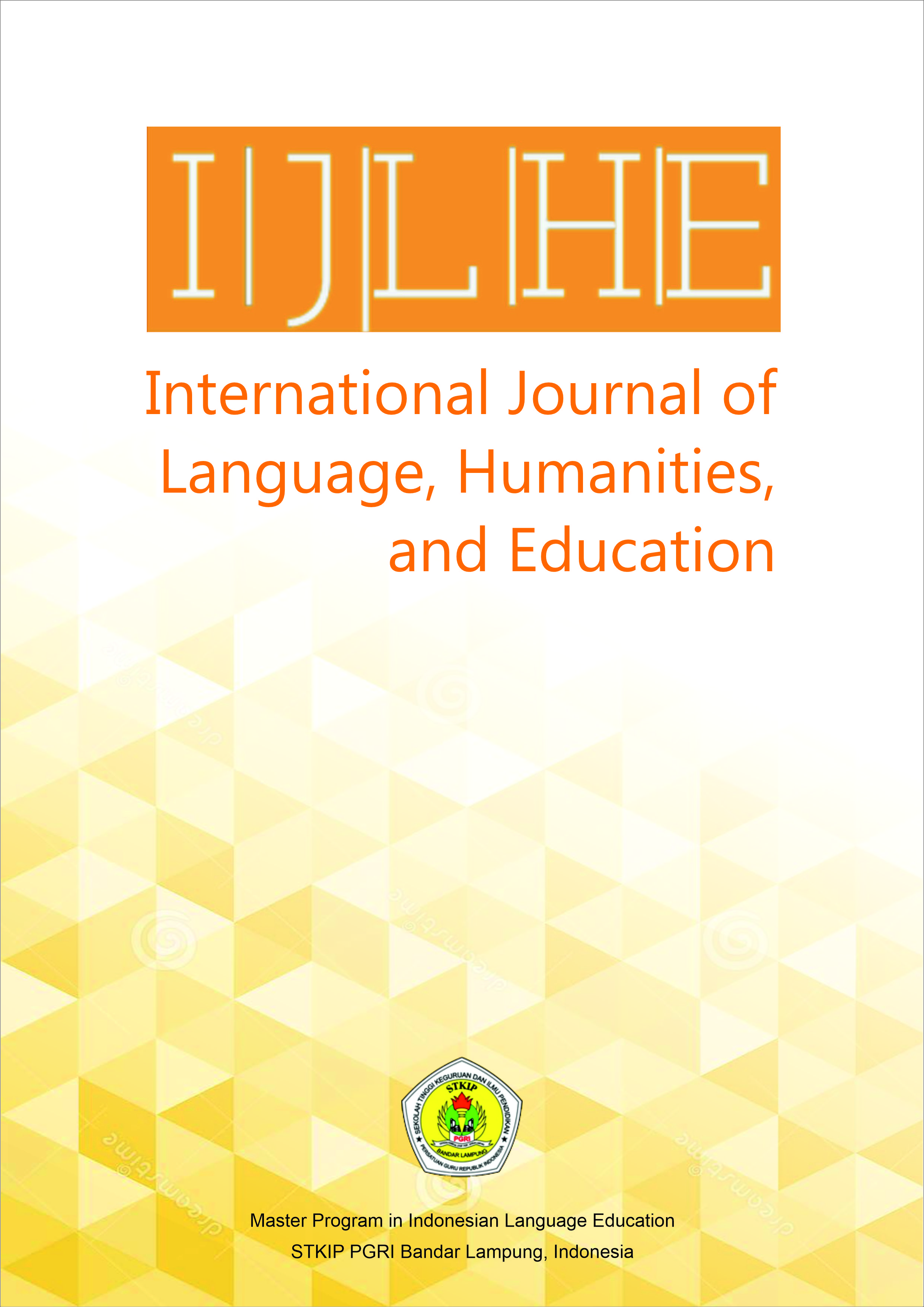When Words Fail: Exploring Speaking Anxiety Among ESL Learners
DOI:
https://doi.org/10.52217/ijlhe.v8i1.1849Keywords:
Descriptive statistics, Learning English, Second Language, Self-confidence, Speaking anxietyAbstract
This study examined the speaking anxiety levels and sources among 130 English as a Second Language (ESL) students at Universitas Pamulang, across basic and intermediate courses. Speaking competence is crucial in today's globalized world, yet anxiety often hinders learners' confidence and participation. Using a quantitative survey, the adapted "Sources of Speaking Anxiety for Learners of English as a Second Language Scale" by Young (1990) was administered. Descriptive statistics, t-tests, and ANOVA were used to analyze the data, looking at anxiety levels and their connection to gender and proficiency. Results showed that over half of the students (53.49%) experienced some speaking anxiety. Interestingly, no significant differences were found based on gender or overall proficiency, except for one specific item: intermediate learners showed higher anxiety when interacting with peers of the opposite sex. The primary sources of anxiety identified were fear of making mistakes, unfamiliarity with topics, fear of evaluation, and limited vocabulary. Conversely, speaking with classmates and engaging in role-play activities were less anxiety-provoking. These findings highlight the need for educators to address both the psychological and teaching aspects of language instruction. The study recommends implementing learner-centered approaches, interactive speaking tasks, and supportive classroom environments to alleviate performance pressure. The results have implications for developing more inclusive and effective ESL instruction, especially where students have limited English exposure outside the classroom. Future research could benefit from qualitative data and larger, more diverse samples.
References
Byram, M. (2020). Teaching and assessing intercultural communicative competence revisited. Multilingual Matters. https://doi.org/10.21832/BYRAM0244
Cohen, J. (1988). Statistical power analysis for the behavioral sciences (2nd ed.). Lawrence Erlbaum Associates.
Dewaele, J.-M., & Li, C. (2020). Emotions in second language acquisition: A critical review and research agenda. Foreign Language World, 196(1), 34–49. https://caod.oriprobe.com/articles/58141199/Emotions_in_second_language_acquisition_A_critical.htm
Dörnyei, Z., & Ushioda, E. (2021). Teaching and researching motivation (3rd ed.). Routledge/Taylor & Francis Group. https://doi.org/10.4324/9781351006743
Gallo, F., DeLuca, V., Prystauka, Y., Voits, T., Rothman, J., & Abutalebi, J. (2022). Bilingualism and aging: Implications for (delaying) neurocognitive decline. Frontiers in Human Neuroscience, 16, 819105. https://doi.org/10.3389/fnhum.2022.819105
Gkonou, C., Mercer, S., & Dewaele, J.-M. (Eds.). (2020). New insights into language anxiety: Theory, research and educational implications. Multilingual Matters.
Goh, C. C. M., & Burns, A. (2022). Teaching speaking: A holistic approach. Cambridge University Press.
Gregersen, T., & MacIntyre, P. D. (2021). Optimizing language learners’ nonverbal communication in the classroom. Multilingual Matters.
Hermansyah, H., Hastomo, T., & Abdullah, A. (2019). The use of story-telling techniques for improving students' speaking ability. IJLHE: International Journal of Language, Humanities, and Education, 2(2), 25–31. STKIP PGRI Bandar Lampung. https://jurnal.stkippgribl.ac.id/index.php/ijlhe/article/view/839
Huang, J., & Zhang, J. (2016). A study on anxiety in Chinese EFL university students. English Language Teaching, 9(9), 179–193. https://doi.org/10.5539/elt.v9n9p179
Istiara, F., Hastomo, T., & Indriyanta, W. A. (2023). A study of students’ engagement and students’ speaking skill: A correlational research. Teknosastik, 21(1), 1–7. https://doi.org/10.33365/ts.v21i1.2198
Kholid, M. F. N., Utamie, Z. R., & Hastomo, T. (2022). Collaborative learning: A strategy for improving students’ speaking skill. Lexeme: Journal of Linguistics and Applied Linguistics, 4(1), 23–28. https://openjournal.unpam.ac.id/index.php/LJLAL/article/view/19064
Li, C. (2022). Foreign language learning boredom and enjoyment: The effects of learner variables and teacher variables. Language Teaching Research, 29(4), 1499–1524. https://doi.org/10.1177/13621688221090324
Lightbown, P. M., & Spada, N. (2020). How languages are learned (5th ed.). Oxford University Press.
Loewen, S., & Reinders, H. (2020). Key concepts in second language acquisition. Palgrave Macmillan.
MacIntyre, P. D., Gregersen, T., & Mercer, S. (2022). Positive psychology in SLA. Multilingual Matters.
Mak, B. (2011). An exploration of speaking-in-class anxiety with Chinese ESL learners. System, 39(2), 202–214. https://doi.org/10.1016/j.system.2011.04.002
Marion Williams, & Mercer, S. (2020). Exploring psychology in language learning and teaching (2nd ed.). Oxford University Press.
Nation, I. S. P. (2020). Learning vocabulary in another language (2nd ed.). Cambridge University Press.
Odlin, T. (1989). Language transfer: Cross-linguistic influence in language learning. Cambridge University Press. http://dx.doi.org/10.1017/CBO9781139524537
Ortega, L. (2020). Second language acquisition: Critical concepts in linguistics. Routledge.
Reinders, H., & Benson, P. (2017). Research agenda: Language learning beyond the classroom. Language Teaching, 50(4), 561–578. https://doi.org/10.1017/S0261444817000192
Taguchi, N., & Roever, C. (2021). Second language pragmatics. Oxford University Press.
Tuan, N. H., & Mai, T. N. (2015). Factors affecting students’ speaking performance at Le Thanh Hien High School. Asian Journal of Educational Research, 3, 8–23.
Young, D. J. (1990). An investigation of students’ perspective on anxiety and speaking. Foreign Language Annals, 23(2), 539–553. https://doi.org/10.1111/j.1944-9720.1990.tb00424.x














